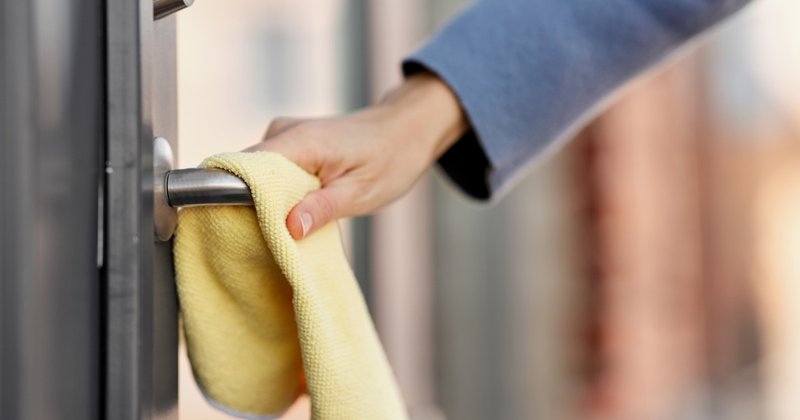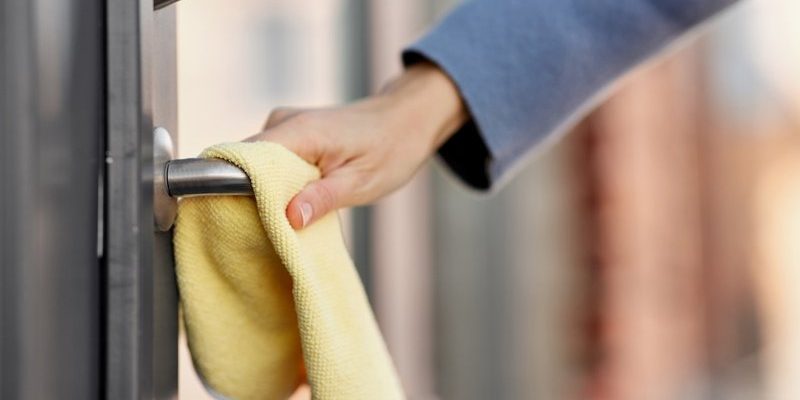
Exterior door hardware is designed tough, but it’s not invincible. Whether you’ve got a shiny satin nickel handle, a dark bronze lever, or a basic stainless steel knob, those acid-laden droppings can do a number on both appearance and function. The trick is knowing how to clean up bird droppings safely and quickly, and how to protect that hardware—no matter the brand—from future attacks. Let’s break it down step by step, without any jargon or confusion.
Why Bird Droppings Damage Exterior Door Hardware
You might be wondering, what makes bird droppings so harsh on hardware? The secret’s in the chemistry. Bird droppings are full of uric acid—a compound that’s way more corrosive than what you’ll find in most household messes. On surfaces like stainless steel, brass, and zinc, that acid doesn’t just sit there. It starts to break down protective coatings and dig into the metal itself, often in less than a day.
Here’s the thing: most exterior hardware, whether from Kwikset, Schlage, or even off-brand universal remotes for gates, comes with a protective finish. But if that’s compromised, or if acid sits too long, you’ll start seeing dull spots, stains, or even pitting. That’s not just ugly—it can actually affect how well your locks and handles work. Handles might start to stick, keypads can become patchy or unreadable, and the whole system just feels gritty.
Think about the way rust attacks a neglected bike chain. That’s what happens on a micro level when hardware faces repeated droppings. The damage may be slow, but it’s cumulative. Even small stains can become trouble later, especially if you’re thinking about selling your home or want to keep things working smoothly.
Step-By-Step: How To Clean Bird Droppings Off Door Hardware
Now for the good news: you can tackle bird droppings easily if you know what to do. The goal is to remove the acid fast, using gentle methods that won’t scratch or strip the finish. Here’s how to do it:
1. Gather your supplies:
- Soft microfiber cloths (not paper towels – they can scratch!)
- Mild dish soap
- Warm water
- Soft-bristle toothbrush (for tiny crevices or textured areas)
- Gloves if you’re squeamish or sensitive
- Optional: White vinegar, non-abrasive polish, or spray wax for finishing
2. Loosen and soak:
Don’t go at the droppings dry—that can grind bits into the finish. Instead, soak a cloth in warm, soapy water and lay it over the droppings for a few minutes. This softens everything up.
3. Wipe gently:
After a few minutes, gently wipe away the droppings. If there’s any stubborn residue, use a soft toothbrush to loosen it, working in small circles with minimal pressure.
4. Rinse and dry:
Wipe the area with a clean, damp cloth to remove any leftover soap, then dry completely with a fresh microfiber cloth. Water left sitting can cause spotting or corrosion, especially on electronic keypad remotes.
5. Inspect for damage:
Look for dullness, pitting, or discoloration. If you notice anything, skip harsh cleaners—consider a gentle polish made for your hardware’s finish before moving on.
Safe Cleaning Products For Different Hardware Finishes
All hardware isn’t created equal—your door lock might need different care than your gate remote or garage keypad. Using the wrong cleaner can strip coatings or even *void your warranty*. Here’s what works for each type:
Satin Nickel, Chrome, or Stainless Steel:
Stick with just mild soap and water. Avoid anything with ammonia, bleach, or abrasives. For stubborn spots, a tiny bit of white vinegar on a soft cloth does wonders, but don’t let it sit too long.
Oil-Rubbed Bronze or Brass:
Use only water and a bit of mild soap. This finish is often “living,” meaning it changes over time. Harsh cleaners can cause patchiness. For shine, a drop of olive oil on a soft cloth can help—but don’t overdo it.
Powder-Coated or Painted Hardware:
Gently wipe with a soft, soapy cloth. Never use solvents or scrubbing pads, as these can scratch or dull the surface fast.
Electronic Keypads and Remotes:
Always check your manual! Usually, a lightly dampened microfiber cloth is all you need. Never spray liquid directly onto the remote or keypad—moisture can seep in and cause issues with the battery or code sync features.
The basic rule: when in doubt, go gentler than you think you need to. Over-cleaning can be just as bad as letting acid sit.
How To Protect Door Hardware From Bird Droppings
Cleaning is just half the battle. If you live in an area with a lot of birds—pigeons, robins, or even the occasional woodpecker—prevention is key for your door hardware and remotes.
Try these simple protection strategies:
- Apply a thin coat of car wax or spray wax (made for metal or plastic) every couple of months. This creates a barrier that helps acid wash away in the rain, instead of soaking in.
- Install small awnings, overhangs, or shields above your door hardware to physically block birds from perching or dropping their “gifts.”
- Mount plastic bird spikes or deterrent strips on nearby ledges, light fixtures, or signs. It sounds intense, but honestly, it works without harming the birds.
- If dealing with a remote keypad or universal gate control, keep it covered when not in use—some brands sell tiny flip-up covers or you can DIY one with a bit of clear plastic.
I know what you’re thinking: isn’t wax for cars, not door handles? Here’s the thing—most car waxes are safe for metal and plastic hardware, and they make cleaning up a breeze when another mess appears. Just don’t use anything gritty or colored, and buff off the excess.
What About Heavily Damaged Hardware?
Sometimes you catch the bird bomb too late and find out your hardware is already pitted, corroded, or just plain ugly. Is it worth trying to fix, or should you replace it?
Minor stains or dull spots:
A bit of non-abrasive polish might bring back the shine. For keypads, a gentle buff with a damp microfiber can help, but don’t expect miracles if the coating is gone.
Pitted or corroded areas:
Honestly, once the metal itself is eaten away, there’s not much you can do. On mechanical hardware, it’s often safer and faster to replace than to fight rust forever.
Function issues:
If locks won’t turn, keypads don’t sync, or remote batteries keep dying (maybe from hidden corrosion inside), open things up, check the battery contacts, and clean with a cotton swab—sometimes this saves you a replacement.
If you’re not sure, take advantage of warranties from brands like Kwikset, Schlage, or even universal keypad makers. They often cover finish defects and functional problems—just don’t try to repair things yourself if you want to claim it.
Comparing Different Brands And Universal Hardware
You might wonder if some brands handle bird droppings better than others. In my experience, premium names like Schlage and Kwikset use higher-quality coatings than no-name or universal remotes, which helps a bit. But here’s the catch—no finish is truly “bird-proof.” The real difference comes in how easy it is to clean, whether the hardware has solid warranty coverage, and if replacing parts is possible.
Universal remotes for gates or garages, for example, often use cheaper plastics and painted keypads. They’re convenient and work with multiple brands, but they’re also more vulnerable to acid damage. If you rely on a universal remote or code-based access, be extra diligent with covers and regular cleaning.
Brand doesn’t make you immune—prevention and fast clean up are the real game-changers when it comes to bird droppings and exterior hardware.
How Often Should You Clean And Protect Door Hardware?
Here’s a simple routine for keeping your exterior door hardware (and remotes) looking like new:
- Spot clean any visible bird droppings immediately—same day if possible. The longer it sits, the worse the damage.
- Wipe down all handles, locks, and remotes at least once a month, even if you don’t see any mess. This removes invisible grime and keeps hardware shiny.
- Re-apply wax or protective coating every 2-3 months, or after every deep cleaning.
- After heavy rains or storms (when birds are extra active), give everything a quick once-over just in case.
Sticking to this schedule protects your investment, keeps everything working smoothly, and saves you time and money long term.
Wrapping Up: Keep Your Hardware Clean, Protected, And Working
Nobody loves scrubbing away bird droppings from their door hardware or remotes, but a little regular care is the secret to keeping things looking fresh and functioning perfectly. Bird droppings are tough, but your cleaning routine can be tougher. Remember—mild soap, soft cloth, and a bit of patience go further than any miracle spray. Top it off with a layer of wax or a smart cover, and you’re not just cleaning; you’re protecting your home’s first impression.
Whether you have a Schlage keypad, a universal gate remote, or simple metal doorknobs, the rules are the same: quick cleanup and gentle products save the finish, while smart prevention keeps those acid attacks at bay. Your hardware works hard—give it the maintenance it deserves, and it’ll keep welcoming you home for years to come.
